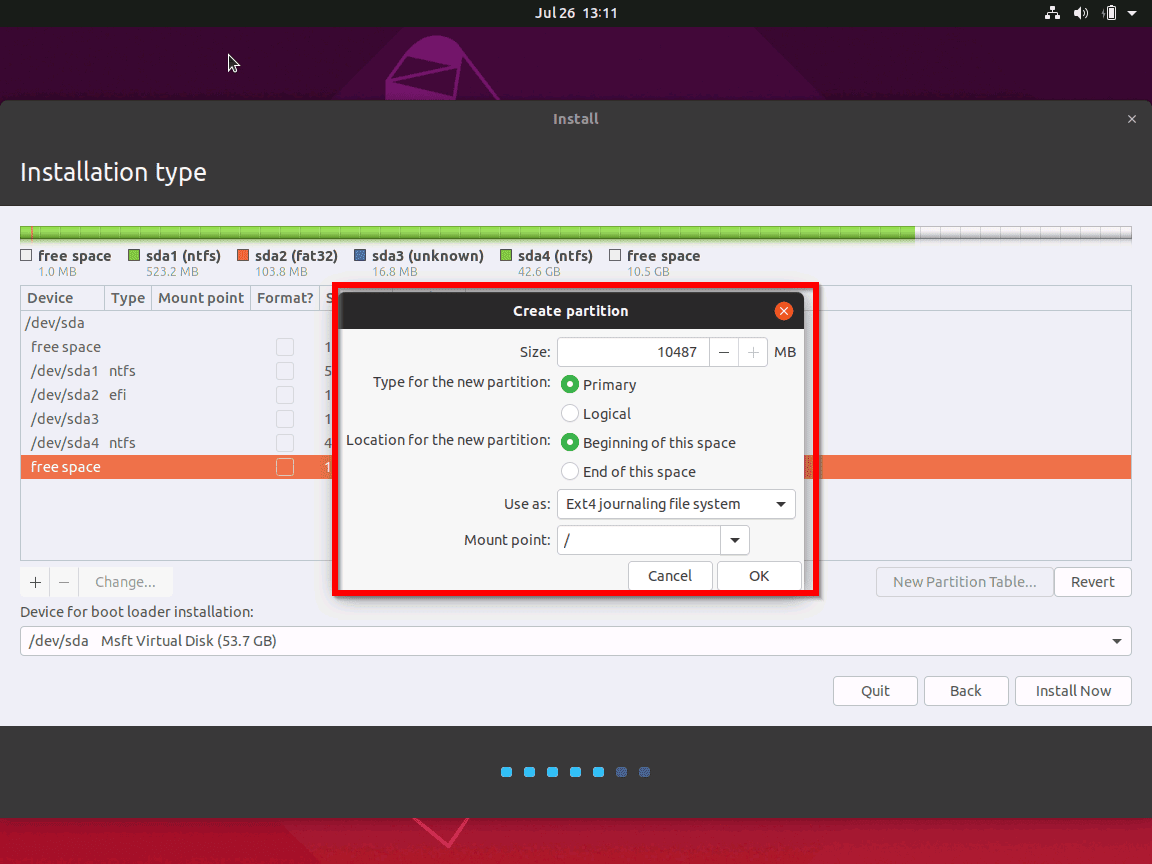
This step is purely for demonstration purposes to make sure the new file does not have the same mode permissions and ownership as the original file. To ensure we have a change of file ownership and mode permissions, we’ll create a new file and then copy the existing file over it. Let’s say we want to edit the fstab file. You need to make sure these are exactly the same on your new file as they are on the original file before you copy the new version over the original file. When you copy a file, the file ownership can change, and the file mode permissions can be altered. If you make a mess of editing the copied file, there’s no harm done. When you’ve finished editing the new file, you can copy it back over the original file. If you wish to open a different file, click the Other documents button at the bottom of the menu. If you want to re-open one of the listed files click on the name of the file. You can also press Ctrl+O to open a file. Replicating Ownership and Permissions to a New FIleĪ cautious way to edit system files–and therefore a commendable way to edit system files-is to copy the file and then edit the copy. To open an existing text file click the Open button in the gedit toolbar. Pros: Notepadqq supports tabbed projects, color-coded syntax, syntax highlighting, auto-tabbing, and a good search-and-replace feature. Even though different developers manage the projects, Notepadqq is a fair replica of Notepad++. This command opens gedit and loads the samba config file for editing. Notepadqq is a Linux editor inspired by the Notepad++ application for Windows. You get the command line prompt back straight away and you can carry on using the terminal window even when gedit is running. If you want to use the terminal window while gedit is still open, launch gedit with this command instead. The terminal window will wait for gedit to close before it returns you to the command prompt. It’s often named “Text Editor.” Just search the applications menu for “gedit.” Of course, you can also launch gedit from your Linux desktop’s application menu. You can get on with the task of typing up whatever you’re working on with no distractions. It’s an uncluttered and clean application window.

The gedit text editor will appear shortly. To start gedit from the command line, type gedit and hit Enter. RELATED: What Does "Everything Is a File" Mean in Linux? Launching gedit It’s a handy tool for editing files when all you need is just enough editor to get the job done-without the learning curve of some of the power-house editors like vim. That includes Ubuntu, Fedora, Debian, CentOS, and Red Hat. The default GNOME text editor is gedit, so you should find it on any system with a GNOME desktop environment. You can read these files to learn more about the inner workings of your operating system, and you can edit them to change its behavior. While that’s not strictly accurate, text files are often used for system logs and configuration.


 0 kommentar(er)
0 kommentar(er)
